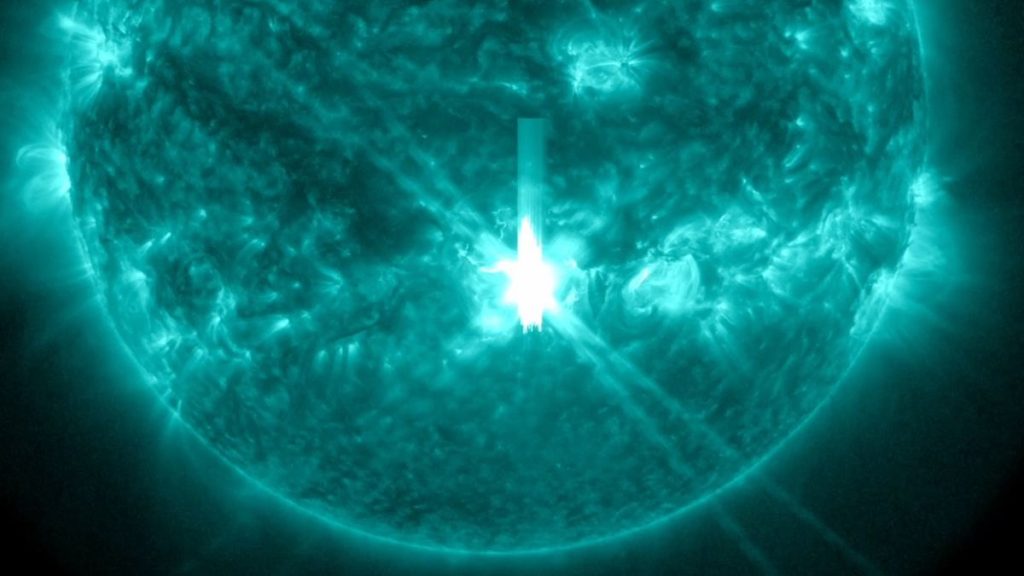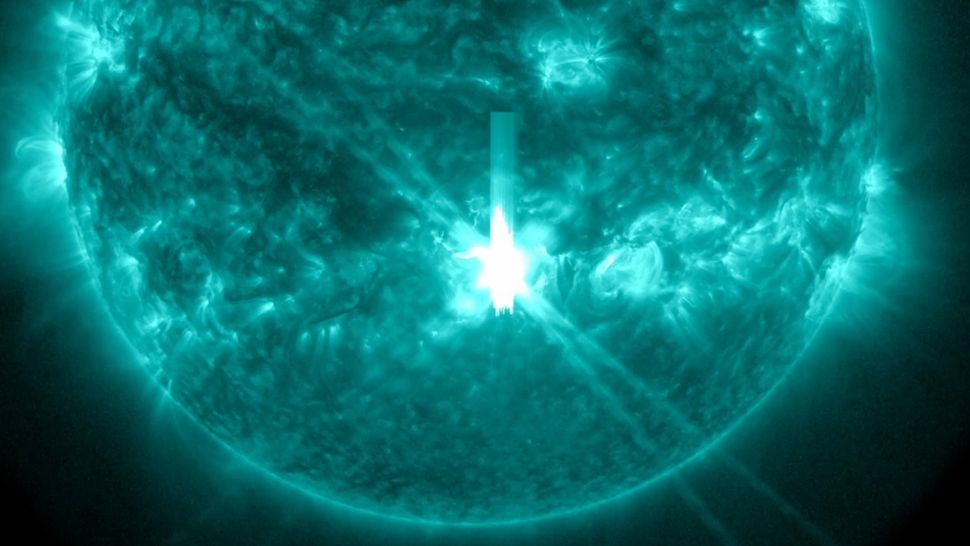
Biggest solar flare since 2017 erupts from sun and Earth is in the firing line (video) (Image Credit: Space.com)
The sun has just unleashed its most powerful solar flare this cycle, a colossal X-class eruption.
The X9.05 solar flare peaked at 8:10 a.m. EDT (1210 GMT), triggering shortwave radio blackouts over Africa and Europe, the sunlit portion of Earth at the time of eruption.
The solar flare emanated from the sunspot group AR3842, which has made headlines before. On Oct. 1, the same sunspot region fired off a powerful X7.1 solar flare and unleashed a coronal mass ejection (CME) — a plume of plasma and magnetic field — which is currently barreling toward Earth. That incoming CME is expected to hit Earth between Oct. 3 and Oct. 5, possibly triggering widespread auroras.

An Earth-directed CME did indeed follow the monster flare, space weather forecaster and meteorologist Sara Housseal confirmed in a post on X. This could be excellent news for aurora chasers, as CMEs can trigger geomagnetic storms, which in turn can result in dramatically boosted auroral displays. “As of right now, I would anticipate an impact at Earth late 5th — early 6th,” Housseal wrote.
Related: Where and when to see the northern lights in 2024
CMEs carry electrically charged particles known as ions, and when these collide with Earth’s magnetosphere, they can trigger geomagnetic storms. During these storms, the ions interact with gases in Earth’s atmosphere, releasing energy in the form of light. This phenomenon is recognized as the northern lights, or aurora borealis, in the Northern Hemisphere, and as the southern lights, or aurora australis, in the Southern Hemisphere.

We will have to wait what happens in the following days. Space weather is fickle and unpredictable, so it certainly keeps the forecasters on their toes. One thing we know that did accompany the major X flare was a radio blackout.

The shortwave radio blackouts experienced over Europe and Africa were a result of the radiation from the solar flare reaching Earth and ionizing the upper atmosphere upon arrival. This ionization creates a denser environment for high-frequency shortwave radio signals, which facilitate long-distance communication, to travel through. As these radio waves pass through ionized (electrically charged) layers, they lose energy due to increased collisions with electrons, which can weaken or entirely absorb the radio signals.
Today’s record-breaking solar flare was the most powerful one in this solar cycle so far. In fact, it was the most powerful solar flare in over seven years! Back in September 2017, two colossal flares measuring X13.3 and X11.8 were reported in the declining phase of the previous solar cycle. (Solar activity waxes and wanes over the course of an 11-year cycle.)
Solar flares are classified by size into different classes, with X-class flares being the most powerful. M-class flares are 10 times less powerful than X-class, followed by C-class flares, which are 10 times weaker than M-class. B-class flares are 10 times weaker than C-class, and A-class flares are 10 times weaker than B-class and have no noticeable impact on Earth. Each class is further divided by numbers from 1 to 10 (and beyond for X-class flares) to indicate the flare’s relative strength.
If you’re interested in tracking space weather and knowing when and where to spot auroras, I suggest downloading a space weather app that provides forecasts based on your location. One option I use is “My Aurora Forecast & Alerts,” available for both iOS and Android. However, any similar app should work well. I also use the “Space Weather Live” app, which is available on iOS and Android, to get a deeper understanding of whether the current space weather conditions are favorable for aurora sightings.





